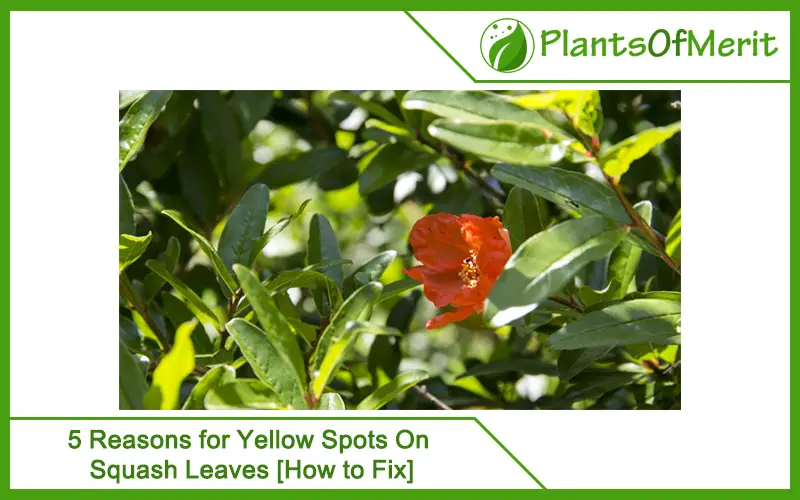Cultivation of pomegranate crops at home can be very beneficial for the gardener due to so many reasons. Pomegranates are one of the oldest known fruits and have a lot of health benefits. It is not difficult to grow a pomegranate tree at home but you must fulfill all the conditions before you plant the tree.
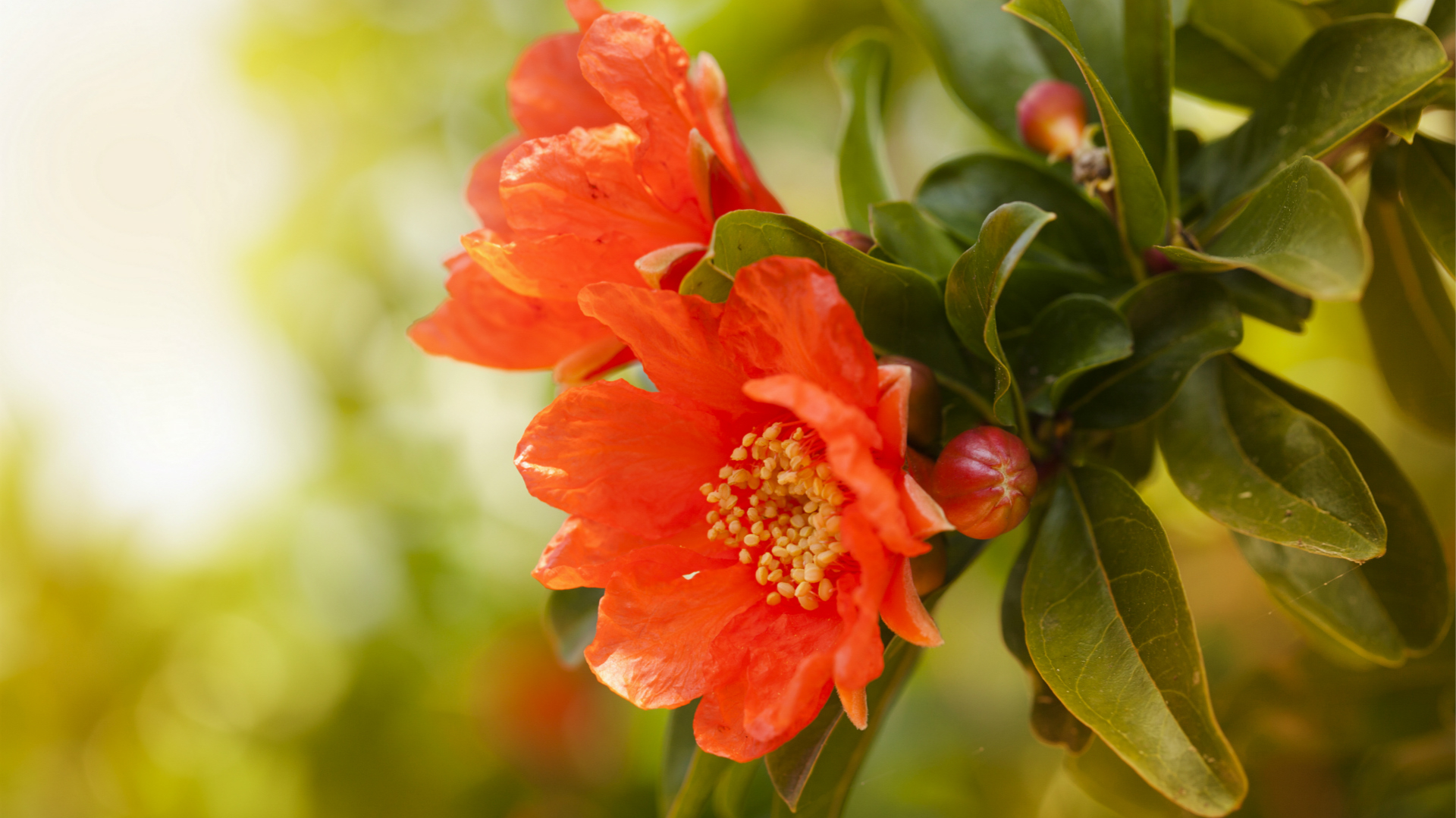
If the conditions aren’t met, you won’t get satisfactory results as the plant won’t produce fruits. Read this post ahead to know about all the possible reasons why your pomegranate trees Gabe flowers but no fruits:
1. Poor Pollination
If you want to know what your pomegranate plant doesn’t have fruit, you must know the basics of plant reproduction first. Pomegranate trees can fruit by themselves, which means the flowers on this plant are both female and male. Humming and other Pollination insects help in transmitting the pollen from one flower to the other.
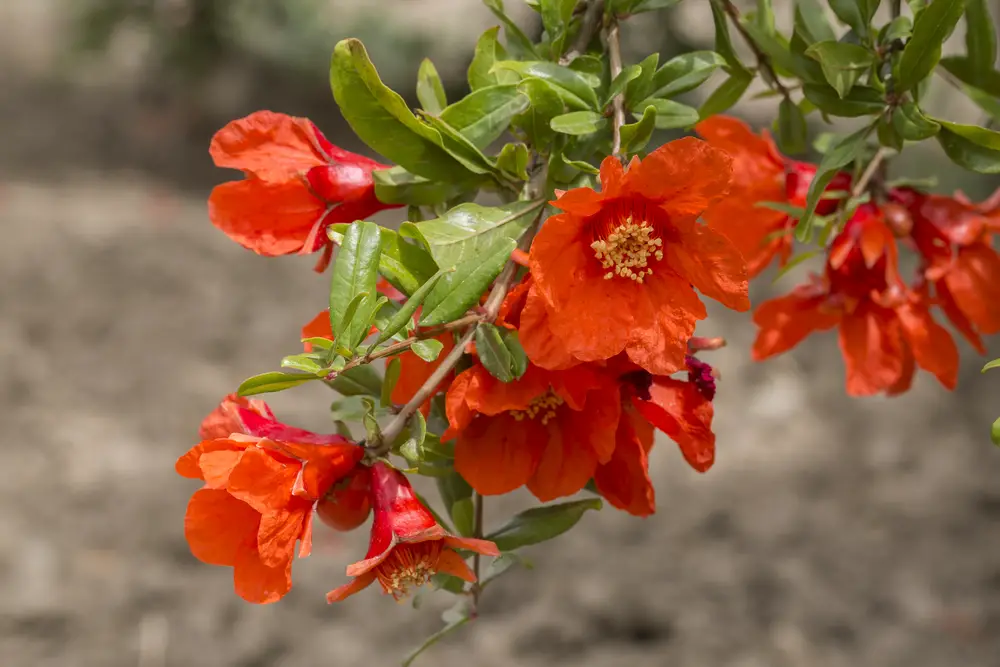
You can also help with the use of a small brush using it to brush from one flower to the other. Male pomegranate flowers naturally fall off the plant just like un-fertilized female flowers. The fertilized female flowers remain on the plant and become fruit.
Solution
The most effective solution to improve pollination is attracting more bees and other insects which help in pollination. The best way of doing this is to plant more and more flowers that are heavy with pollen. Also, include a bird bath in your garden or any other water feature that helps bees to drink water. Also, don’t use any harmful pesticides on the flowering pesticides in your garden. Even if you want to spray, only use Neem oil and spray during the early morning or late evening when the bees are inactive.
Another way is hand pollination. To do is, you can use a small artistic paintbrush or cotton swab with a Q tip. This can be used for transferring pollen from the male stamen to the female ovary. This is best when done in the early morning.
Start the process of hand pollinating by finding open flowers, with pollen that can be transferred easily. Then, make use of the swab or brush flower to swirl all over the stamens. Swirl the pollen collected on the brush carefully on the stigma, a knob located on the top of style and nestled amongst the stamens. In simple words, ensure that you touch the surfaces all over the middle of the flower. If you have several pomegranate trees, switch from one free to the other for cross-pollination.
2. Environmental factors
Your pomegranate tree may not have flowers because of too cold too. So, it is suggested for you keep your plant protected against chill and cold. Another factor is sunlight. You must ensure that your pomegranate trees get adequate sunlight for the best fruits. Most fruits grow best when exposed to direct sunlight. However, trees which get a bit of shade in the dry summer season are also capable of producing good fruits.
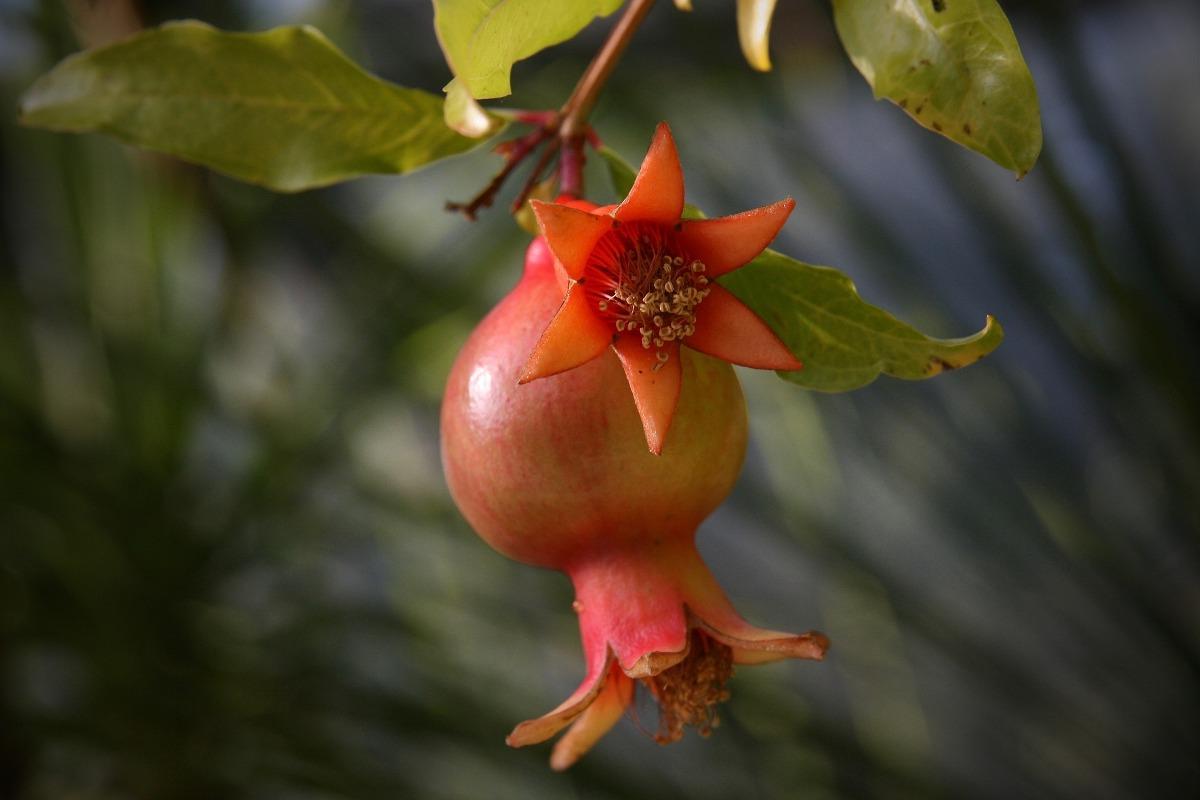
Another common reason for your pomegranate plant not producing fruits can be because of a fungal disease. These diseases can be caused due to different kinds of fungi, insects, and birds.
Solution
Keep your tree in such a position that it gets almost 6 hours of direct sunlight every day. Your pomegranate trees need to get sufficient sunlight exposure for producing proper fruits.
The best solution to fungal problems is using an anti-fungal spray. You must find a suitable anti-fungal spray so that it doesn’t cause harm to your plant. You can find anti-fungal spray at a nearby garden store, or online store and may also use several homemade recipes.
3. Improper watering
Though this is a drought-resistant plant, it requires ample watering for producing fruit. If you water it less, it will lead the plants to drop their fruits. Pomegranate trees must be matured enough for producing fruit. The age of the plant must be almost 3-5 years. Water is the most important nutrient that is required for young pomegranate trees to grow, specifically in their first growing year.
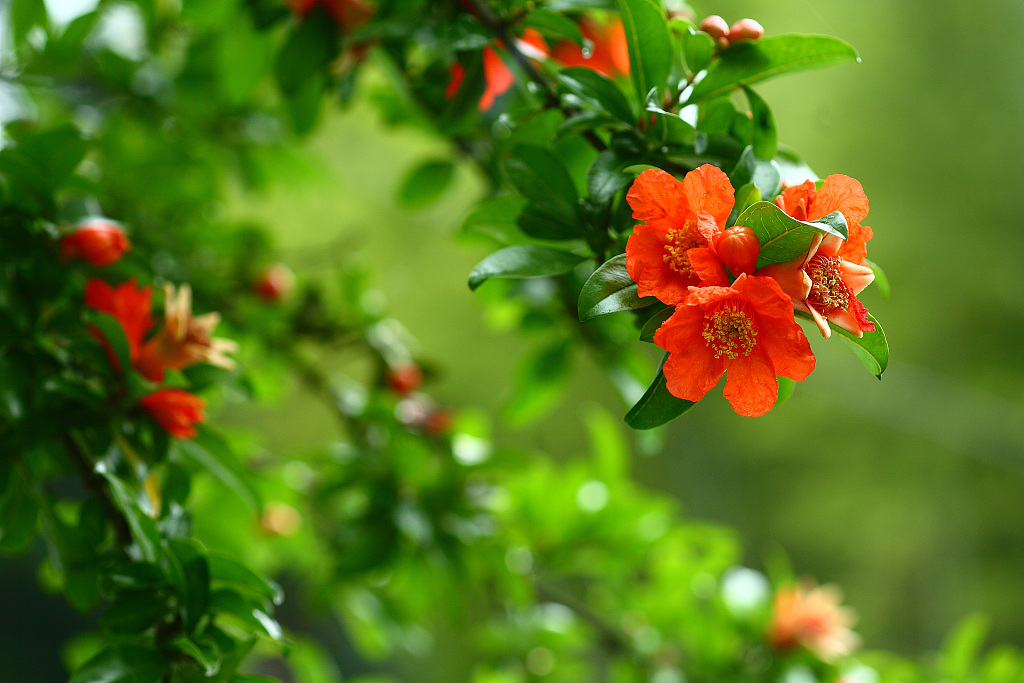
It is also important for the already grown trees. For already grown trees, ample irrigation, in the dry periods is important for enhanced growth, yield, fruit set, and size. Fruits can start dropping at a premature stage and will also split if the trees don’t get adequate water in the dry season.
Solution
The best way to get rid of this cause is by providing sufficient water to your pomegranate trees. Before you plant these trees, you must know their water requirements from time to time. Also, make sure that you water those trees consistently. Don’t be irregular in watering.
4. Pests
Pomegranate trees start flowering in May and their flowering season continues till Autumn season. If your pomegranate plant has flowers but no fruits, the reason can be an infestation of insects like scale, mealybugs, or whitefly.
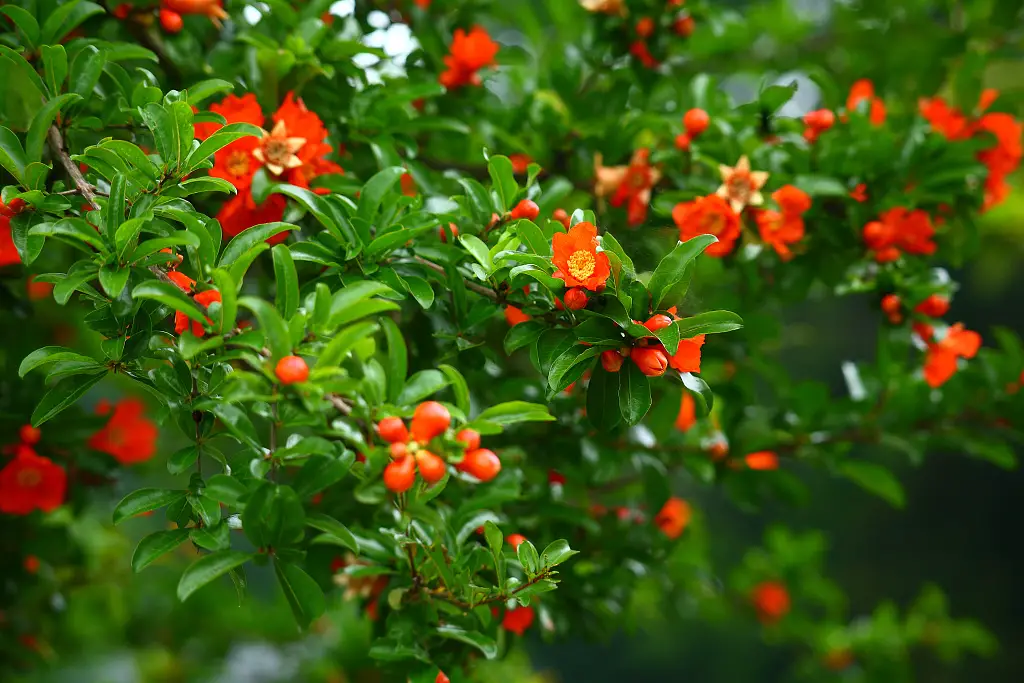
Solution
Check the tree for damage and talk to your local garden store for advice related to the usage of insecticide. If you don’t prefer using these harsh insecticides on your tree, you can make your homemade recipes like the Neem oil recipe, basil spray recipe, and many more to get rid of pests on your trees.
5. Irregular pruning
Pomegranate trees start flowering from old wood, meaning the growth of previous years. You need to keep pruning your trees at regular intervals. Pruning helps the trees in getting rid of dead leaves, branches, and more. When you prune a tree properly, new growth can take place easily. If you want your pomegranate tree to give off flowers properly, make sure you keep pruning it as regularly as possible.
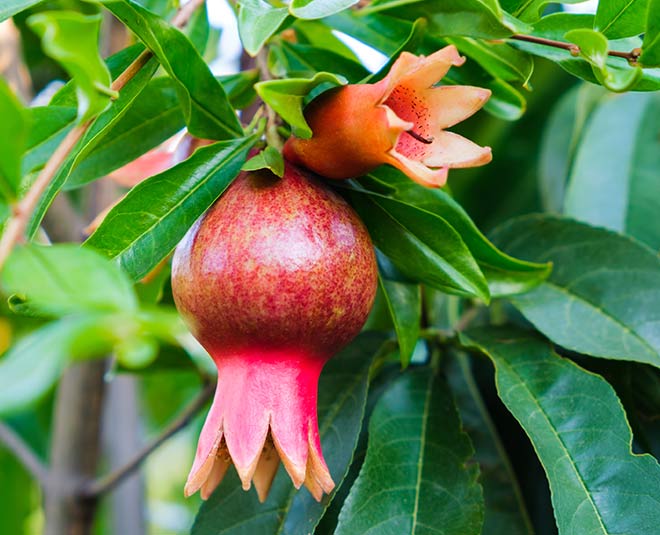
Solution
Yearly pruning in the initial 3-4 years can help in encouraging a lot of new growth, which can create a voluminous tree with fruits and flowers. During the early spring, when leaves start emerging at the branches of your tree, start pruning. If your tree didn’t grow properly the last year, just try snipping off 8 inches of tips from all branches. If you have a large tree with good growth, cut off one or two feet from all branches. This pruning will help in a lot of new growth.
6. Imbalanced fertilizer use
One of the major causes of your pomegranate tree not producing fruit can be that it gets too much Nitrogen which is the primary one out of all ingredients in fertilizer. The other 2 are potassium and phosphorus. Most fertilizers gave high nitrogen content, and pomegranate trees that grow in a garden are prone to over-fertilization using Nitrogen.
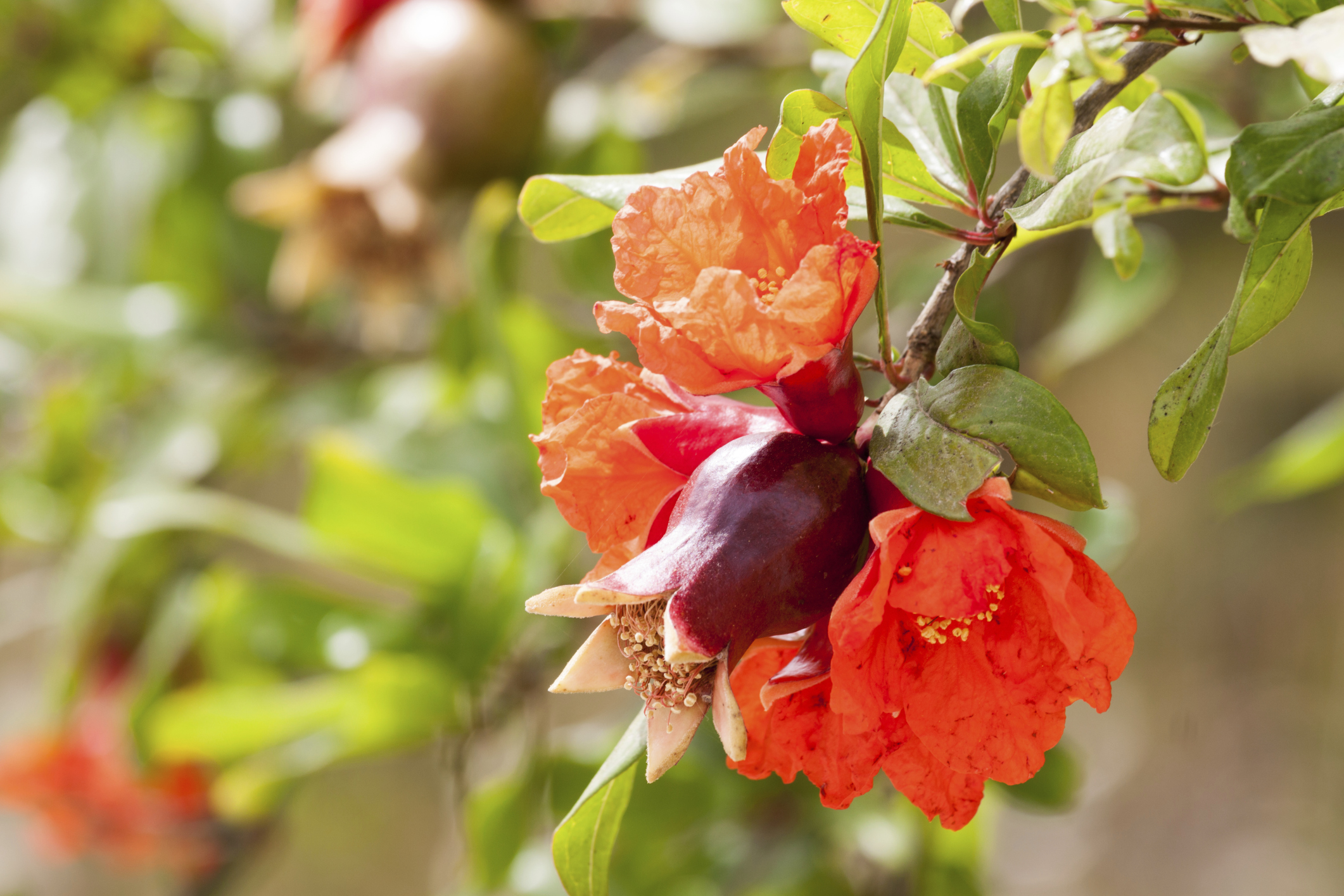
Solution
To solve this problem, you can create mulched bed near the base of your pomegranate plant. The feeder roots of the pomegranate tree can grow properly beyond the branch of your tree, increase the mulched area 5 feet or more over the branch perimeter. Then, prevent spreading the fertilizer over the mulched area. Until and unless the soil in your lawn is sandy and doesn’t hold the nutrients properly, these plants need a very less amount of fertilizer.
Don’t use fertilizer on your pomegranate plant in its first growing season. Start during the second year, and feed them as shown on the product label using natural plant food like slow-release plant and tree-based fertilizer. As an alternate option, you can also feed your pomegranate plant by mulching using natural compost. Using the right fertilizer plays a very crucial role here. Start spreading the fertilizer from a point that is nearly a foot or more of the trunk to 6 inches over the branch perimeter for each foot in the total height of your tree.
7. Improper soil type
The main difference between other fruit trees and pomegranate is that pomegranate trees can grow in various types of soil. Be it black loamy soil, heavy clayey soil, lime-rich soils, sandy soils, rocky soil, or any other soil type, pomegranates can grow easily. Considering that, we can say that pomegranates are tolerant of all kinds of garden soil. They grow the best when planted in deep, loamy soil with high humus.
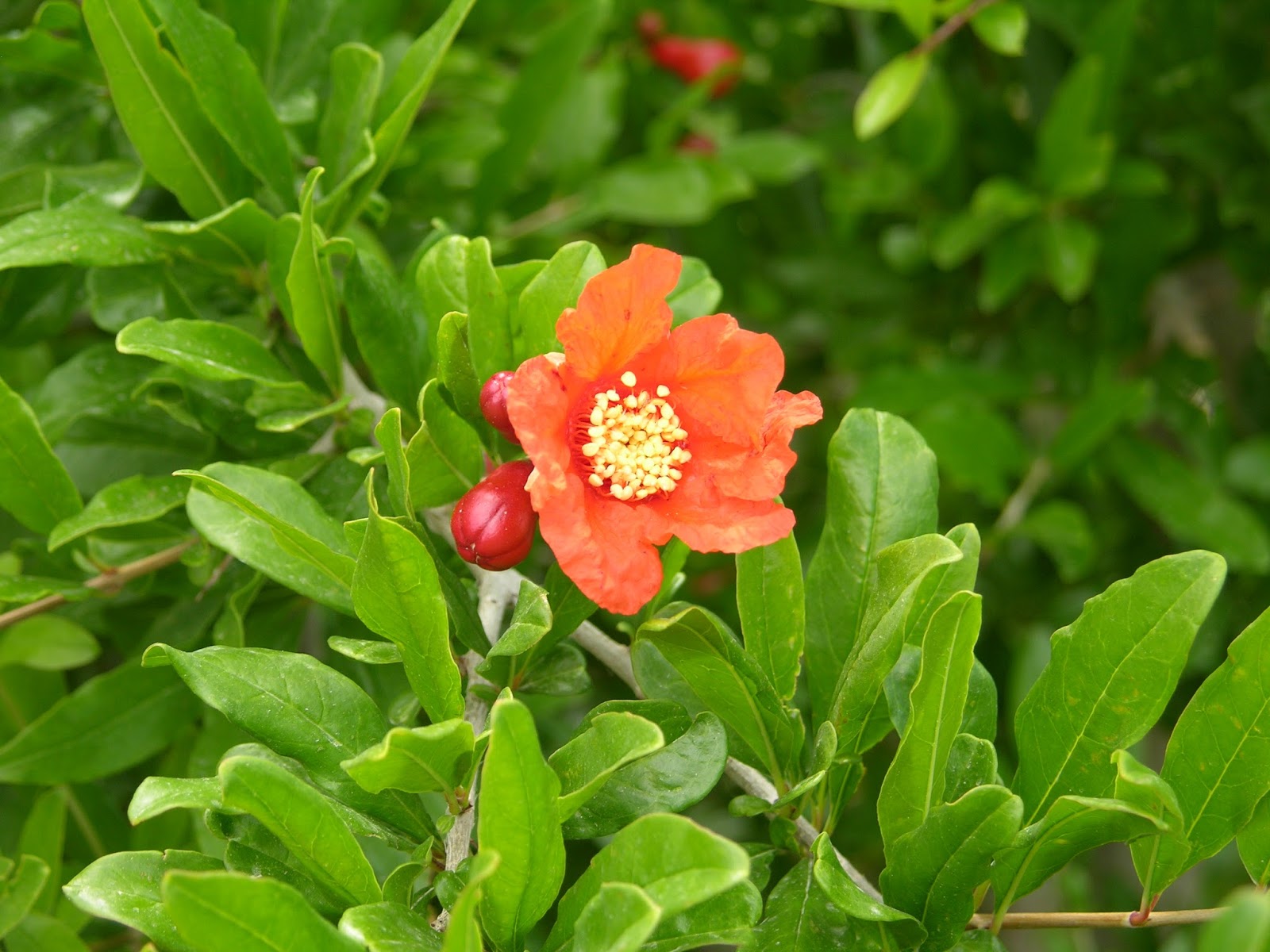
Solution
You must plant your pomegranate trees in soil that has proper drainage. Constantly wet soil or soggy soil can cause damage to their roots. Shorter flooding periods don’t usually create a plant but the soil must drain well. When you grow them on fast-leaching soil, pomegranates need added fertilization to produce good fruits.
Conclusion
These are the main reasons why your pomegranate plants have flowers but no fruits. If you face this problem with your pomegranate trees, you can be assured that the reason is anyone or more out of the ones mentioned above in this list. You can also consider these as important conditions which must be fulfilled if you want good fruits from your pomegranate trees. Once you fulfill all these conditions, your pomegranate plant will start producing healthy fruits as it should.

